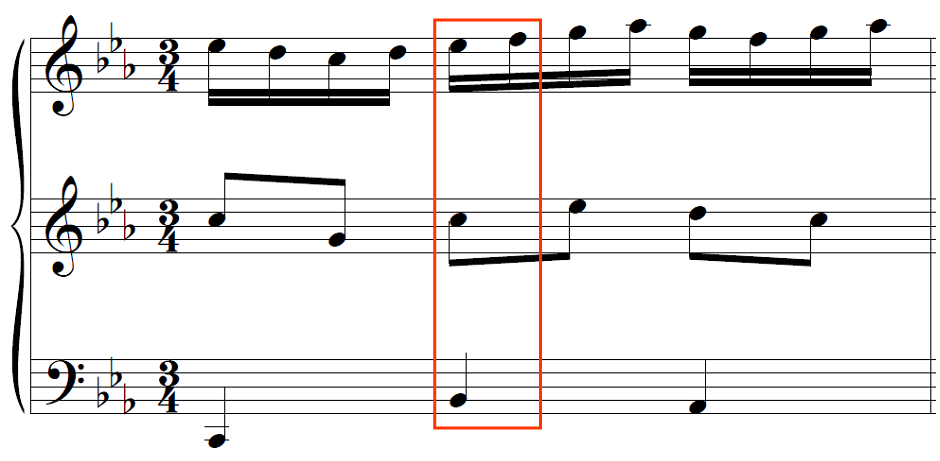
| A | B | F♯ | |||||||
| F | C | G | D | A | E | B | F♯ | ||
| A♭ | E♭ | B♭ | F | C | G | D | A | E | |
| D♭ | A♭ | E♭ | B♭ | F | C |
(Rerecorded with an odd stop in May 2020.)
A problematic point in this piece is measure 18:

The combined notes in the red box are:
| C | ||||||
| E♭ | B♭ | F | C | |||
| E♭ | B♭ | |||||
| (1) | (2) | (3) | (4) | (5) | (6) | (7) |
(minor third C-E♭ has pitch ratio 32/27)
Because I did not like the 32/27 minor third, I changed the notes a bit: I cut the C note (in the red box) in half, so the second chord only contains the notes B♭ and F. That gives a peculiar phrasing at that point and to obscure that, I applied similar phrasing to similar melody fragments nearby. That is what you can hear in the full version above.
In February 2019 a new score annotation type was added to the software allowing me to indicate in the score that a minor third on a particular note should definitely have a pitch ratio 6/5. In this case that would be the note C, so the minor third C-E♭ gets a pitch ratio 6/5. That forces the optimizer to use the notes in columns (1) u/i (5) above. But then we get a syntonic comma between the C notes in columns (1) and (5), making measure 18 sound as follows:
(mid air syntonic comma on C as a tone repeat)
(mid air syntonic comma on C as a 2 msec pitch slide)
When I had added this analysis (September 2019), I thought I might once get used to this pitch slide solution.
(There is yet another solution - not elaborated here - that uses the notes in columns (3) u/i (7), which produces a syntonic comma between the B♭ notes in columns (3) and (7).)
The following version is in a twelve tone unequal temperament, so you can compare.
(Kellner tuning)
Trouble grasping the difference with just intonation? The fragments on the home page may help.